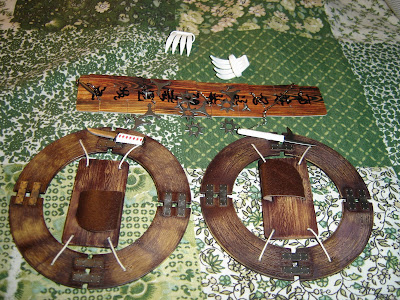.JPG)
.JPG)
.JPG)
.JPG)
The Praetorian Guard (Latin: PRÆTORIANI) was a special force of guards used by Roman Emperors. Before being appropriated for the use of the Emperors' personal guards, the title was used for the guards of Roman generals, at least since the rise to prominence of the Scipio family; around 275 BC. Constantine I dissolved the Guard in the fourth century.
The term "Praetorian" derived from the tent of the commanding general or praetor of a Roman army in the field—the praetorium. It was a habit of many Roman generals to choose from the ranks a private force of soldiers to act as guards of the tent or the person. They consisted of both infantry and cavalry. In time, this cohort came to be known as the cohors praetoria, and various notable figures possessed one, including Julius Caesar, Mark Antony and Augustus (Octavian). As Caesar discovered with the Legio X Equestris, a powerful unit more dangerous than its fellow legions was desirable in the field. When Augustus became the first ruler of the Roman Empire in 27 BC, he decided such a formation was useful not only on the battlefield but in politics also. Thus, from the ranks of the legions throughout the provinces, Augustus recruited the Praetorian Guard.
While campaigning, the Praetorians were the equal of any formation in the Roman Army.[citation needed] Seldom used in the early reigns, they were quite active by 69. They fought well at the first battle of Bedriacum for Otho. Under Domitian and Trajan, the guard took part in wars from Dacia to Mesopotamia, while with Marcus Aurelius, years were spent on the Danubian frontier. Throughout the 3rd century, the Praetorians assisted the emperors in various campaigns.

.JPG)




.jpg)